Teaching with place • an on-going paradigm
I began teaching almost two decades ago, during the time I was completing my MFA at Concordia University. As an independent artist looking for funding – and technically still a student and so not eligible for awards for arts production – I stumbled on the Artist in Education program of the Ontario Arts Council (OAC). Successful in my application there, I began project based work as a visiting artist in schools. And I loved it. I loved seeing kids come alive with art, finding the vocabulary (material and verbal) to explore their interests and ideas, express their desires. Over the years, my work with more than 1000 young people in schools all over the Greater Toronto Area prompted my interest in art as a mode of knowing and my pursuit of a practice-based PhD on the subject. (More about my OAC work with children and youth can be found here on this site.)
Since that time, I have taught all kinds of topics related to visual art, community engagement, and education to adults and children in a wide range of venues. With younger artists (children and youth), the topics I chose tended to emphasize age-appropriate questions of identity and subjectivity; now, working primarily at post-secondary, I add a focus on place, histories and belonging. This is particularly appropriate in the Department of Art Education at Concordia, where teaching and research practices have a strong orientation to community art education.
Community art in Pointe-St-Charles, Spring 2013
In the winter/spring 2013, I taught two back-to-back graduate courses that explored theories and practices of art in communities, with the spring session taking the grad students, experienced artist-teachers all, to three sites in Pointe-St-Charles. The Point is an historic neighbourhood in the South West borough of Montreal (10 minutes directly south of Concordia’s downtown campus) that has faced longtime social needs such as poverty, lower levels of education, social exclusion and stigmatization. Now, with real estate development in all areas adjacent to downtown, the Point and its people are also contending with the stresses of gentrification. Each of the three sites (a school, an adult education centre, an after-school program) is facing particular social issues and challenges that were addressed via collaborative artwork in the form of murals and banners.
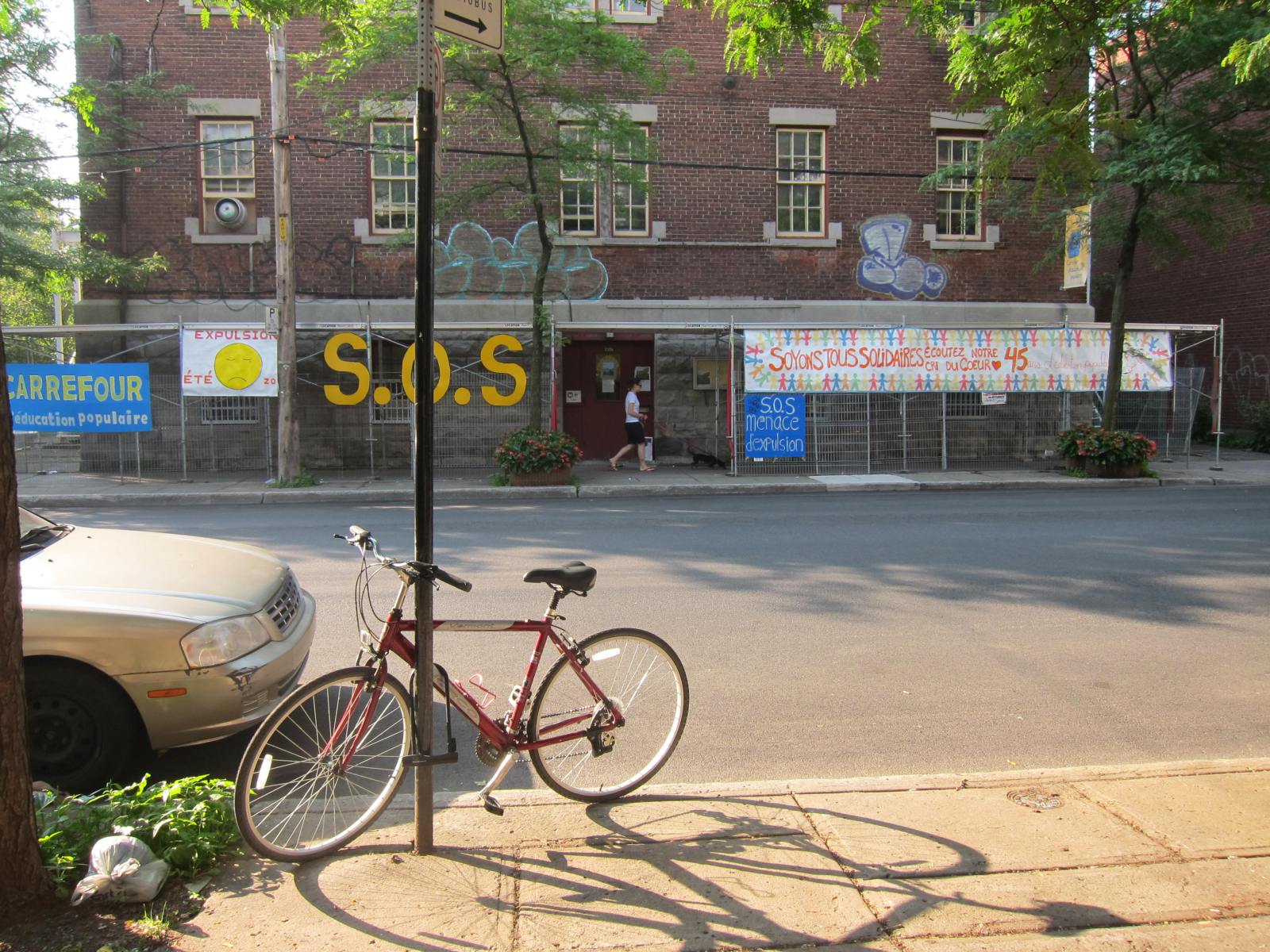
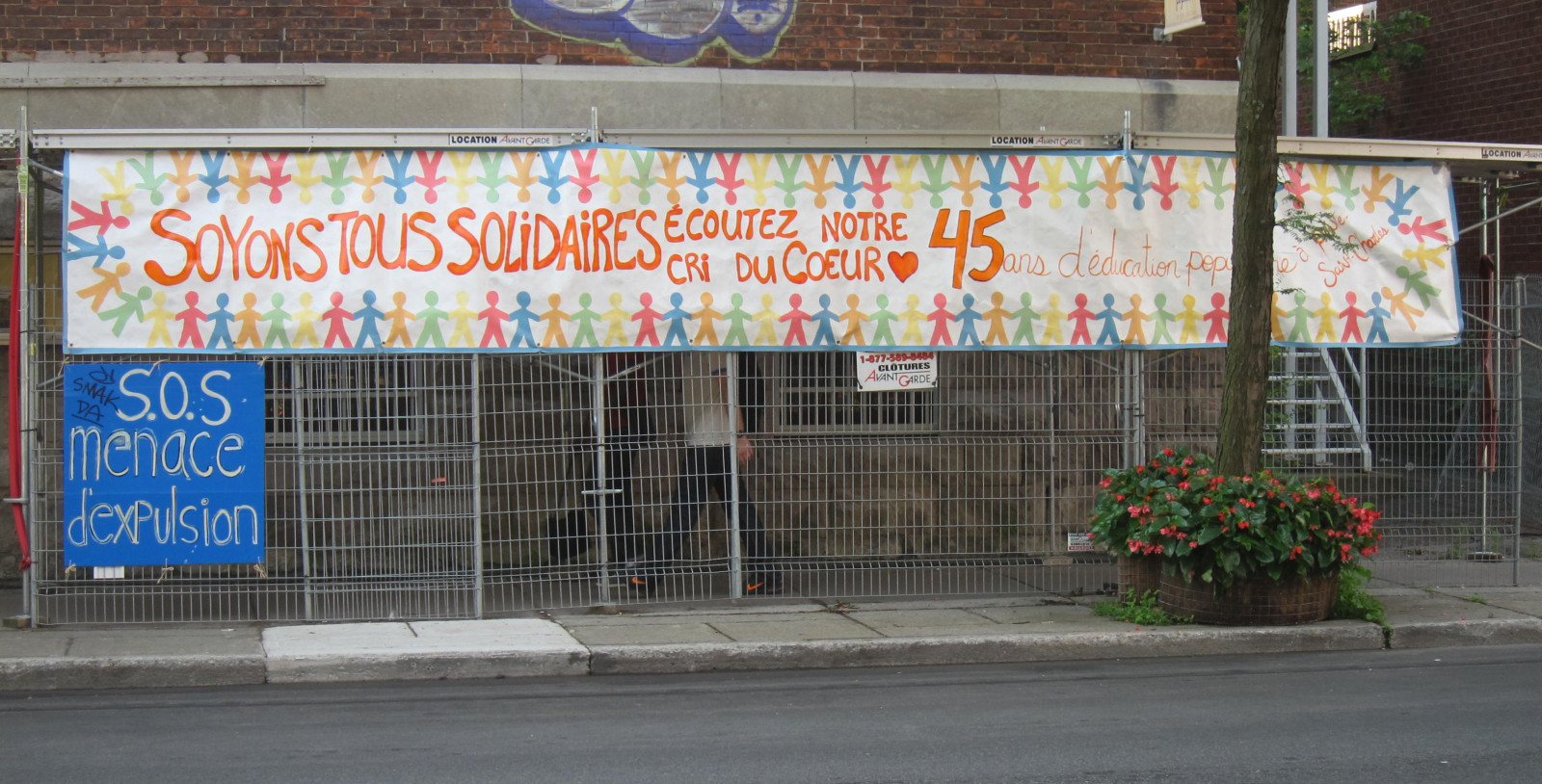

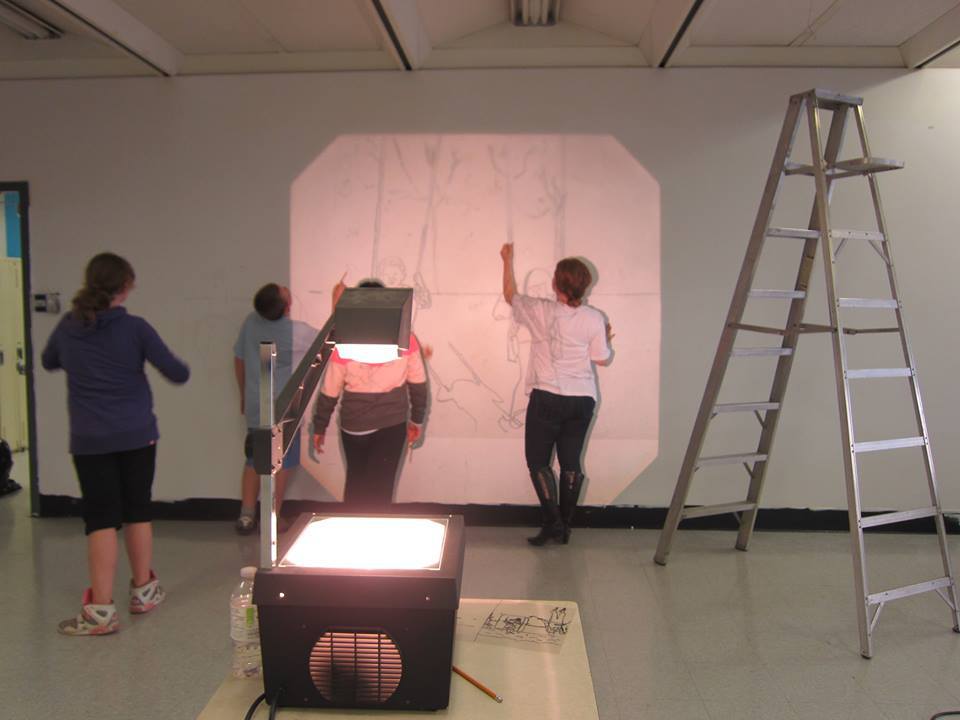
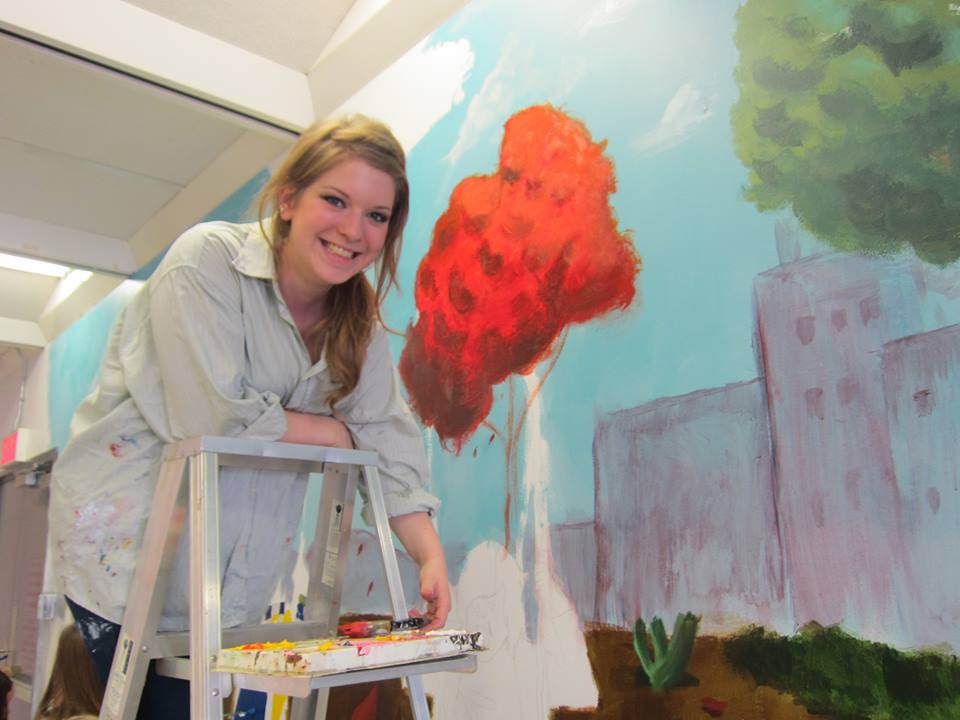
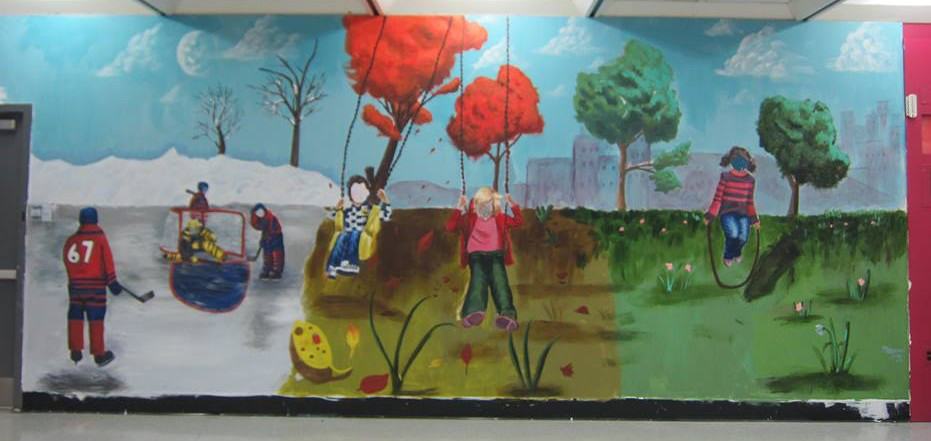
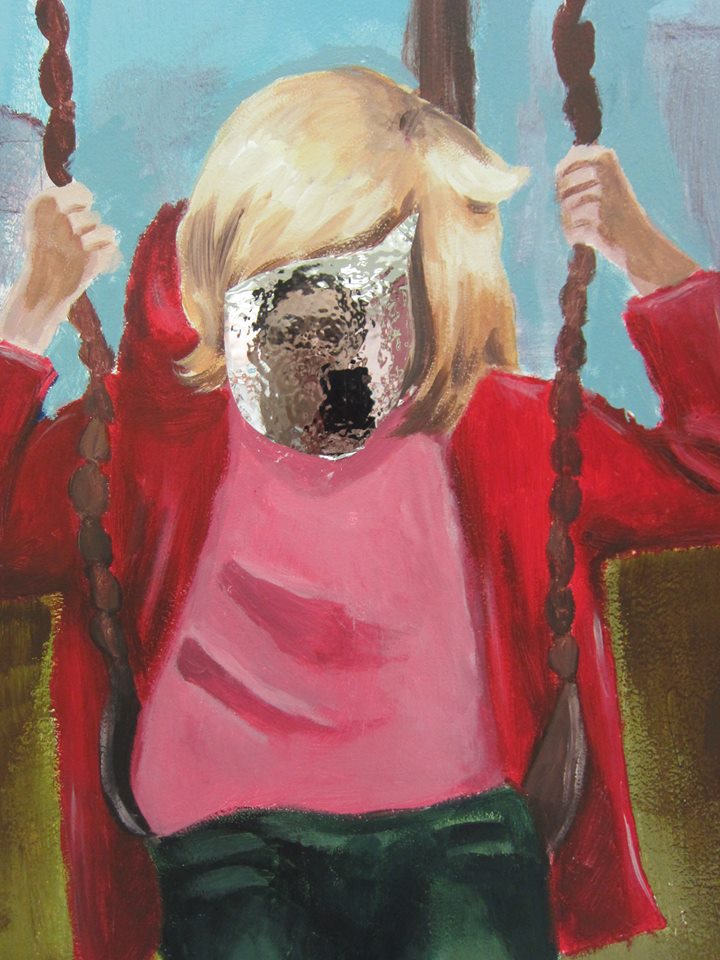
In developing this community/studio course, I worked in an informal alliance with MU, Montreal’s extraordinary not-for-profit mural creation company, that is working to transform our city’s public spaces and its schools. MU was already planning work in Pointe-St-Charles when their director, Elizabeth Ann Doyle, and I connected.
MU was in the midst of organizing the use of the long exterior wall of St. Gabriel’s School for a large mural by artist Annie Hamel, commemorating the 350th anniversary of the arrival of the ‘filles du roy’ (king’s daughters), who first settled in Montreal in the nearby Maison St. Gabriel, now a historical museum. Although exterior murals are created by a team of professional artists, MU also works with local community members on participatory projects, spreading the wealth of art around. Since Elizabeth knew that I had a longstanding interest in bringing more art to the Point, our collaboration was born. Working in a participatory manner inside the school, the Concordia graduate artists and their teams of Grade 6 artists presented quite different views of place, history and belonging than that on the outside wall, oriented to the first settlers from France. The board, the school staff, the parents and the children all appreciated the dialectic: having their own visions made real.
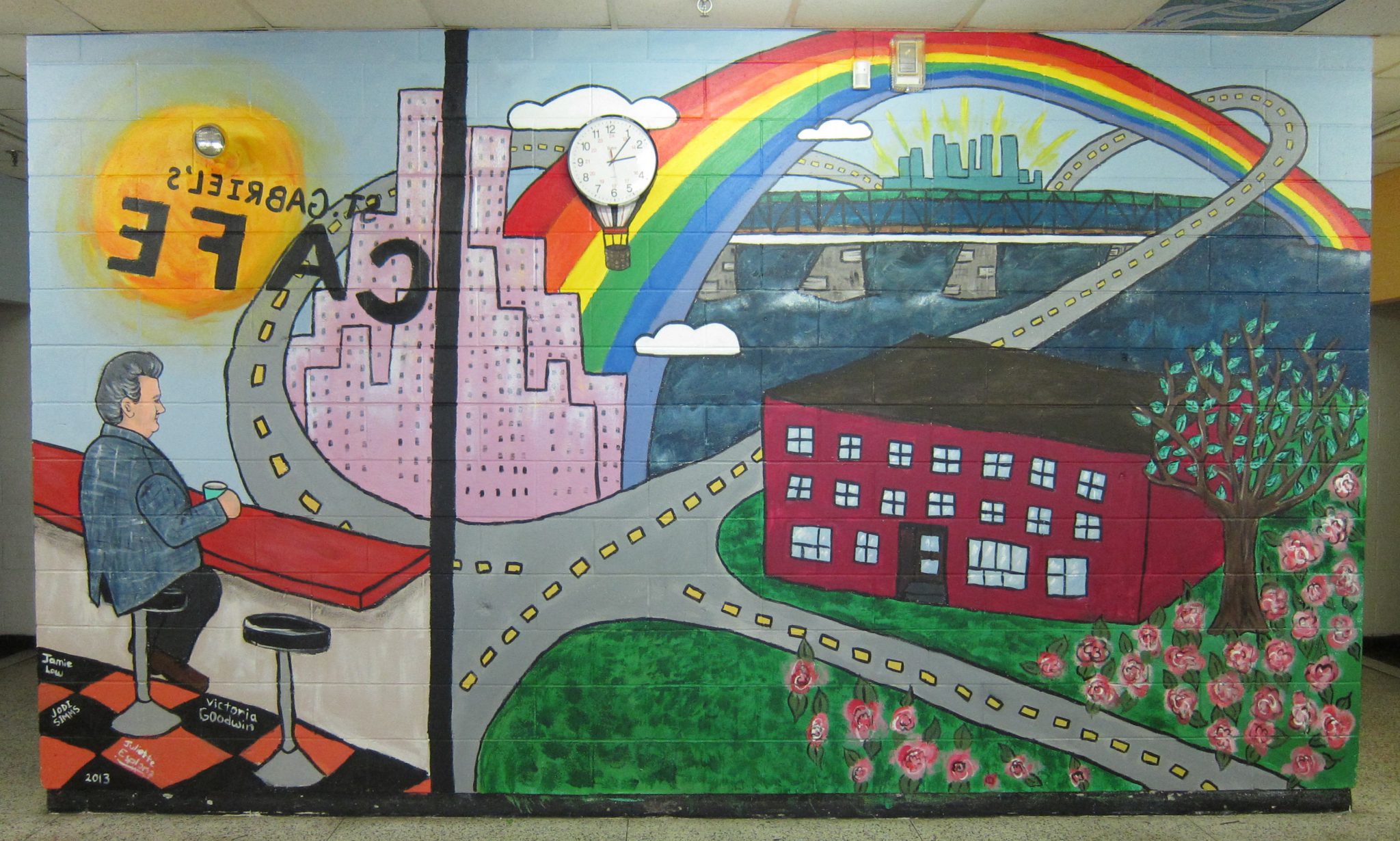
The community-engaged project was very well received by the graduate participants and by the sites at which they worked. We’ve made relationships that we’ll build on, me especially, as I plan for future Pointe-St-Charles based teaching in coming years. With community outreach being an institutional priority of Concordia University, the work of this class was showcased in “Community from the Perspective of an Art Facilitator“ on ConU’s website, a story for all to enjoy.